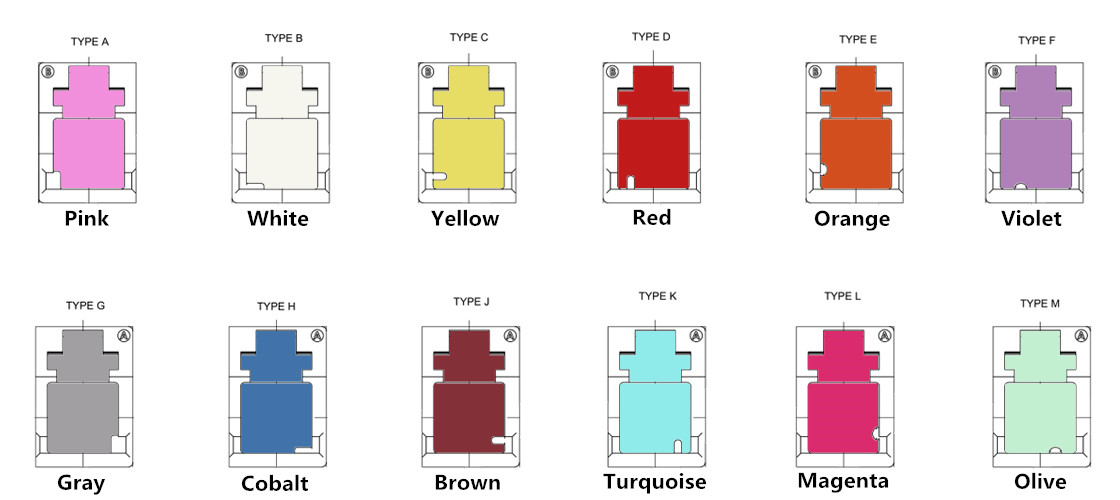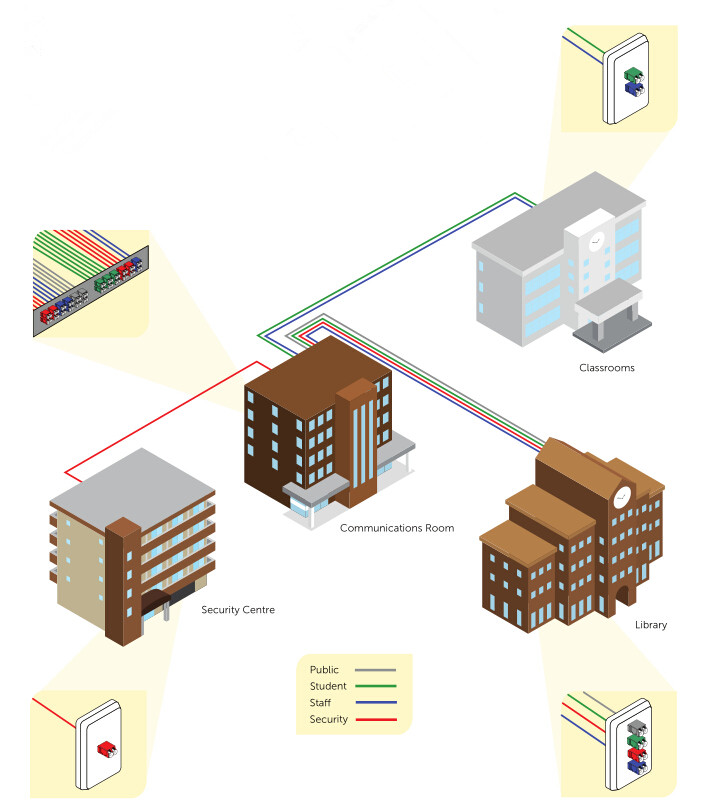In
recent years, physically discrete fiber connection systems have emerged
to meet the ever growing demand for fiber network security. As network
security can be improved with sophisticated software tools, making the
right decisions in the early stage of the infrastructure design becomes
imperative, for the sake of protecting the ever increasing amount of
sensitive data being exchanged over today’s networks. The keyed LC
connectivity solution, topic of this article, offers network users
security at the physical layer.
What Is Secure Keyed LC Connectivity System?
The
secure keyed LC system is designed specifically for mission critical
circuits where networks are segregated by color for identification and
protected from accidental moves, adds, or changes. Generally, the secure
keyed LC components are available with 12 different keying options each
carrying a different color to facilitate network administration. The
keyed LC connectors and adapters are color coded and keyed to allow same
color patching only. Different colored adapters and connectors cannot
mate to allow circuit access. The twelve color-coded key combinations
prevent inadvertent or unauthorized access to networks and provide fast
and easy network identification.

Benefits of Keyed LC Connectivity Solution
The
keyed LC connectivity solution allows manageable and easily
identifiable network segregation by use of a range of physically unique
keyed connector and adapter combinations. Each color features a unique
keying pattern that only allows matched color mating. Networks can
effectively be limited to certain groups, access levels or customers in a
co-location environment, which provides an increased level of security
and stability by protecting against incorrect patching of circuits. The
keyed LC solution comprises a range of network equipment to enable
deployment of a high performance low loss network. Hybrid solutions
allow for integration of the keyed LC solution into an existing network
or on the interface side only.

FS.COM Keyed LC Connectivity Solutions
The
secure keyed LC connectivity system is designed to respond to an urgent
need for products that perform well for use in secure fiber networks.
It offers great performance and reliability and can be installed very
efficiently in all areas of a fiber cabling infrastructure. FS.COM keyed
LC connectivity solutions are as follows.
The
keyed LC fiber patch cables with color coded secure connectors and
matching adapters prevent unauthorized access to secure fiber networks.
They are used in interconnect or cross-connect fiber networks within a
structured cabling system. We have the keyed LC fiber patch cables in
single-mode 9/125 um, multimode 62.5/125 um, 50/125 um and
laser-optimized 50/125 um for the most demanding network performance.

The
keyed LC fiber optic adapters are keyed on both the front and back to
prevent installation errors and avoid a possible security breach. Each
coupler is color coded for identification and features a mechanical key.
Our keyed couplers utilize a ceramic sleeve suitable for both
single-mode and multimode applications.

The
keyed LC fiber adapter panels are a widely recognized modular solution
for restricted fiber cross-connect systems. They have specific color
codes and functional keyed features to identify and manage restricted
network cross connections. Application-specific networks with levels of
security can be supported with keyed LC connections in the data center,
equipment room and telecommunications room. FS.COM keyed LC fiber
adapter panels are available in 12 fibers, 16 fibers and 24 fibers.

The
keyed LC cassettes are designed to prevent unauthorized and inadvertent
changes in highly sensitive applications such as data centers and
secure IT networks. FS.COM MTP/MPO cassettes with keyed LC adapters
provide mechanical security and prevent inadvertent cross connection
between MTP and LC discrete connectors.

Originally published: www.fiberopticshare.com